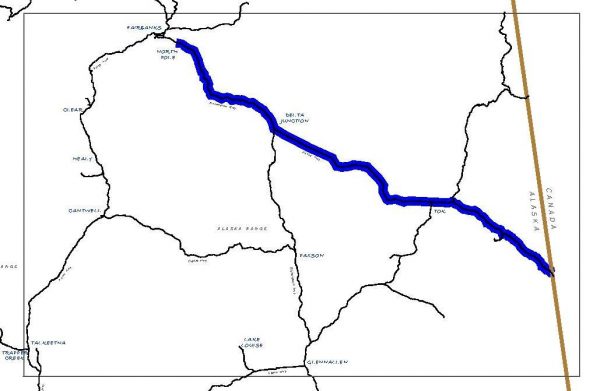
A Palmer-based telecommunications company announced last week it’s begun work on a fiber-optic internet network that’ll connect Alaska to the Lower 48 by linking up with Canada’s network. It’ll be the state’s first all-terrestrial network, and MTA officials say it’ll provide more bandwidth and faster internet connections for their 30,000 customers – and many others whose local internet service providers connect to the new network.
MTA chief executive Michael Burke says the terrestrial network that a company subsidiary is building will provide Alaska with much greater capacity for data flowing to and from the global internet than is now available through four submarine cables laid on the Pacific Ocean floor.
“You could effectively run all of the video and voice and other types of internet communications that’s happening across the entire state through this fiber, many times over,” Burke said in an interview Thursday.
Burke says new network’s overland route through Canada also would make its connectivity less vulnerable to natural disasters or other problems that can knock out submarine cables.
“So you have a major earthquake in Southcentral Alaska near Anchorage – it’s likely not going to take out this cable that’s running down the Alcan Highway,” Burke said.
MTA calls its new network AlCan ONE, which stands for Alaska Canada Overland Network. It’ll be installed along the Richardson Highway from North Pole to Delta Junction, then along the Alaska Highway, also known as the AlCan, to the Canadian border.
“And then when we get to the border,” Burke said, “we’ll just interconnect with Canadian carriers that are completing a fiber build of their own from Haines Junction. And then they take our capacity south through Canada all the way down into the Lower 48.”
Burke declined to say how much AlCan ONE will cost to build. But he says it’ll save MTA money in the long run, because once it’s built the co-op won’t have to pay bigger companies like Alaska Communications for access to their high-speed internet connections. And he says a terrestrial network is much easier to maintain than a submarine cable.
“If you ever have a problem, you can put a crew in a truck and they can drive to it and fix it,” Burke said. “With a submarine cable, if you have a problem, you’ve got to mobilize a very expensive ship to go out, lift the cable off the bottom of the ocean, bring it up, make the repair and drop it down. That can cost you a couple million dollars.
Burke says a contractor working for MTA Fiber Holdings has been surveying along the route and doing design and engineering over the past few weeks. He says the company will begin burying cable next week in Delta, both north to North Pole and south to Canada.
“We have materials staged up there, like in Delta and Tok and some of the key areas along the route,” he said, “so that the material is ready be deployed.”
An MTA Holdings news release says the AlCan ONE network will be up and running next summer.
Tim Ellis is a reporter at KUAC in Fairbanks.




